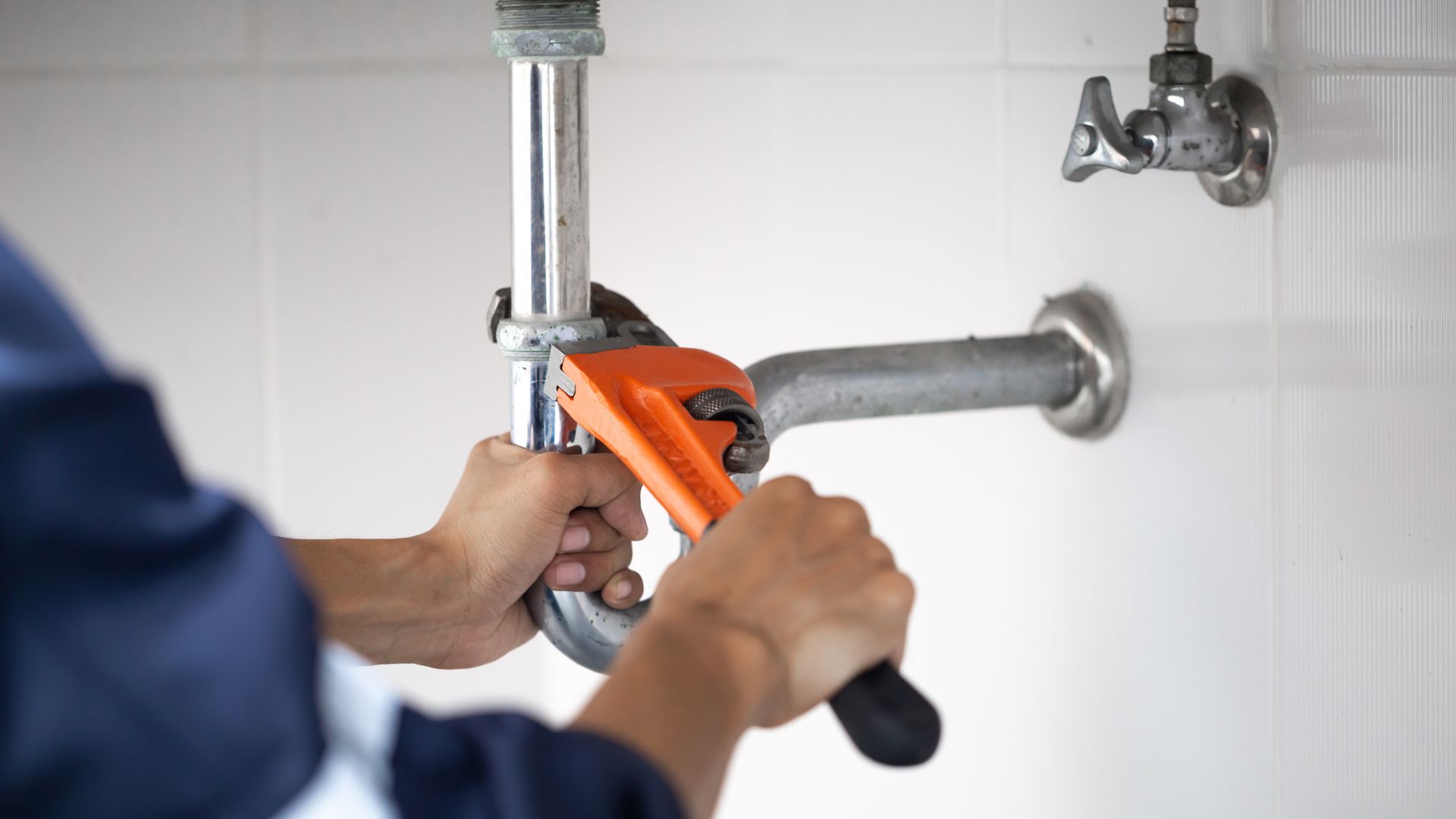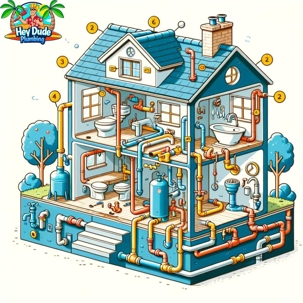A Beginner’s Guide to Home’s Plumbing: Insights from Hey Dude
Welcome to “Understanding Your Home’s Plumbing: A Beginner’s Guide by Hey Dude,” where we aim to demystify the complex network of pipes and fixtures that keep your home running smoothly. For many homeowners, plumbing remains an enigma, often ignored until a problem arises. However, a basic understanding of your home’s plumbing system can be incredibly empowering, allowing you to prevent common issues, save on unnecessary repair costs, and maintain a healthy, efficient household.
In this guide, we’ll break down the essentials of home plumbing into digestible, easy-to-understand pieces. Whether you’re a new homeowner or simply looking to expand your home maintenance knowledge, this guide will equip you with the foundational understanding you need. From the dual nature of your plumbing system—supplying fresh water and disposing of waste—to recognizing the early signs of plumbing issues, we’re here to help you navigate the waters of home plumbing with confidence.
Join us as we explore the basic components, common issues, and maintenance tips that every homeowner should know. With Hey Dude Plumbing by your side, you’re not just a homeowner—you’re a responsible steward of your own little oasis. Let’s dive in and turn the mystery of plumbing into something as clear and approachable as the water flowing from your faucet.
The Basics of Home Plumbing
Understanding the basics of your home’s plumbing is the first step toward becoming a more informed and proactive homeowner. At its core, your plumbing system serves two main functions: bringing fresh water into your home and removing wastewater. Let’s break down these functions for a clearer picture.
Bringing Fresh Water In: This part of your plumbing system is all about supply. Fresh water is brought into your home under pressure, allowing it to travel wherever it’s needed, from your kitchen faucet to your shower head. This water is typically sourced from a city line or a well and is treated to be safe for drinking and use in household tasks. Pipes made from materials such as copper, PVC (polyvinyl chloride), or PEX (cross-linked polyethylene) are commonly used to deliver this water efficiently and safely to various points throughout your home.
Removing Wastewater: Once water has been used, it becomes waste. The drain-waste-vent (DWV) system is responsible for safely transporting this wastewater from your home to a sewage treatment facility or a septic tank. This system relies on a series of pipes, traps, and vents to ensure that waste is removed efficiently, preventing both clogging and the entry of sewer gases into your home. Gravity plays a crucial role here, helping water and waste flow down through the pipes, while vents allow air to enter the system, ensuring water flows smoothly.
Materials Used in Plumbing: The pipes and fixtures in your home can be made from a variety of materials, each with its own advantages. Copper pipes, for example, are durable and resistant to corrosion, making them a popular choice for water supply lines. PVC pipes, on the other hand, are lightweight, easy to work with, and ideal for drain, waste, and vent pipes. PEX tubing is flexible and can be used for water supply lines, offering a cost-effective and easy-to-install alternative to traditional piping materials.
By familiarizing yourself with these fundamental aspects of your home’s plumbing system, you can gain a better understanding of how it works as a whole. This knowledge not only helps you appreciate the complexity and efficiency of modern plumbing but also prepares you to identify potential issues and understand the solutions proposed by professionals. With this foundation, we’ll next explore the common components of your plumbing system, deepening your grasp on what keeps your water flowing and your home comfortable.
Common Components of Your Plumbing System
A well-functioning home plumbing system consists of various components, each playing a crucial role in ensuring that water flows smoothly and efficiently. Understanding these components can help homeowners identify potential issues and communicate more effectively with professionals when needed. Here’s a closer look at some of the key parts of your plumbing system:
Pipes: The lifelines of your plumbing system, pipes are responsible for transporting water in and out of your home. They come in different materials, such as copper for water supply lines and PVC or PEX for both supply and waste lines. Knowing the types of pipes in your home can help you maintain them properly and make informed decisions during repairs or upgrades.
Drains: Drains are found in sinks, showers, bathtubs, and other fixtures, allowing wastewater to exit your home. Keeping drains clear and free of obstructions is essential for preventing backups and ensuring efficient wastewater removal.
Traps: Every drain has a trap, a curved section of pipe that holds water, creating a seal that prevents sewer gases from entering the home. The most common type is the P-trap, easily identifiable under sinks and fixtures. Regular cleaning and inspection of traps can prevent clogs and odors.
Vents: Plumbing vents, which protrude from your roof, allow air to enter the plumbing system, helping water to flow smoothly through drain pipes by preventing vacuum formation. Vents also help to vent sewer gases safely outside your home.
Shut-off Valves: These valves allow you to turn off the water supply to specific fixtures or the entire house, making them invaluable during plumbing emergencies or when making repairs. Familiarizing yourself with the location of these valves can save you from potential water damage in case of a leak.
Water Heater: An essential component of your plumbing system, the water heater provides hot water to your showers, sinks, and appliances. Regular maintenance can extend its lifespan and ensure it operates efficiently.
Septic System/Sewer Line: Depending on your location, wastewater from your home is transported to a municipal sewer system or a personal septic tank. Proper maintenance of your home’s connection to these systems is crucial for preventing backups and ensuring environmental safety.
By getting to know these components of your plumbing system, you gain the ability to identify common problems, perform minor maintenance tasks, and understand the work that professionals do to keep your system running. This knowledge not only empowers you as a homeowner but also helps in maintaining the longevity and efficiency of your plumbing system.
How to Identify Plumbing Issues
Recognizing the early signs of plumbing problems can save you from costly repairs down the line. Common indicators include:
- Unusual Noises: Gurgling sounds from toilets or drains could indicate a blockage.
- Water Pressure Issues: Low pressure might suggest a leak or blockage in the system.
- Water Stains or Damage: Discoloration on walls or ceilings can signal hidden leaks.
- Slow Drains: Water backing up in sinks or showers points to clogged drains.
- Foul Odors: Persistent sewer smells could mean a broken vent or sewer line.
By staying alert to these signs, homeowners can address issues promptly, preventing further damage.
Basic Plumbing Maintenance Tips
Regular maintenance is key to a trouble-free plumbing system. Here are some tips to keep everything running smoothly:
- Prevent Clogs: Avoid flushing non-degradable items and pouring grease down the drain.
- Protect Your Pipes: Insulate pipes in cold weather to prevent freezing and bursting.
- Check for Leaks: Regularly inspect pipes, fixtures, and connections for leaks.
- Clean Faucets and Shower heads: Mineral buildup can reduce water flow; clean them periodically.
- Know Your Main Shut-off Valve: Familiarize yourself with its location to quickly stop water flow during emergencies.
DIY Plumbing vs. When to Call a Professional
While some minor plumbing tasks can be handled by homeowners, knowing when to call a professional is crucial:
- DIY Tasks: Simple tasks like unclogging a drain or replacing a shower head can be safely done with the right tools and knowledge.
- Professional Help: For major leaks, new installations, or issues with your water heater or sewer line, it’s best to consult with a professional plumber. They have the experience and tools to diagnose and fix problems efficiently, preventing further damage.
Conclusion:
Understanding the basics of your home’s plumbing system is an invaluable part of homeownership. By recognizing common components, identifying potential issues, and maintaining your system, you can prevent major problems and make informed decisions. While it’s important to know when a task is within your ability, recognizing when to call in professionals like Hey Dude Plumbing can save you time, and money, and avoid potential disasters.
We hope this beginner’s guide empowers you with the knowledge to keep your plumbing system running smoothly. Remember, a little maintenance goes a long way in preventing emergencies. Should you ever find yourself in need of professional assistance, Hey Dude Plumbing is here to help, ensuring your plumbing needs are met with expertise and efficiency.

